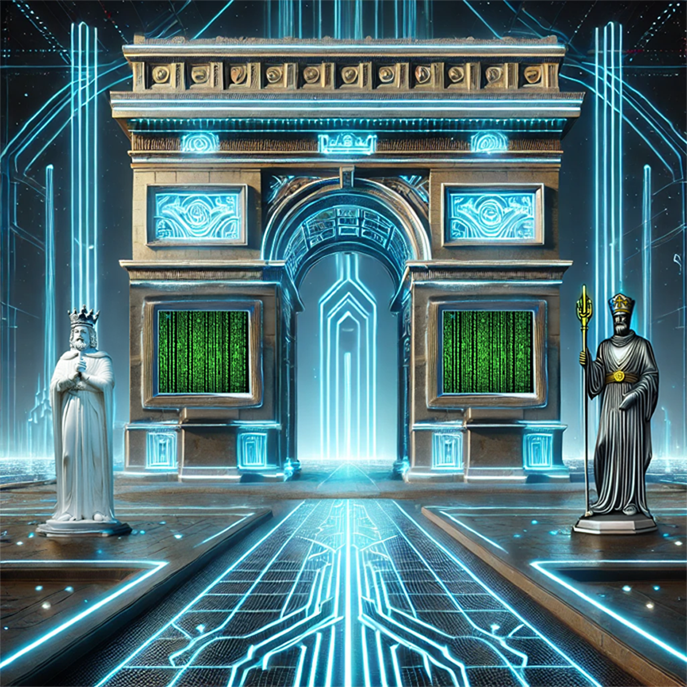The Dawn of Institutionalised Knowledge
1. The Dawn of Institutionalised Knowledge — Crafted to Lead and Control the Masses
Sunrise, zenith, sunset—the original trinity. As solstice shadows fell, two columns rose to mark the temple’s threshold. With them, two lineages emerged: the king and the priest. The king ruled the land; the priest governed the law. Above them, the arch of the gods crowned the structure, symbolising a higher cosmic order—divine law above earthly power.
This archetypal framework, reflected in temple architecture, Masonic symbolism, and mythology, reveals a shared understanding of power and social order. Ancient civilisations such as the Egyptians, Druids, and Mayans aligned sacred sites with celestial events, using the heavens to legitimise authority. The king embodied material and military power; the priest held spiritual and legal authority. Though distinct, they worked in concert to maintain hierarchy, both governed by an unseen cosmic principle.
2. Institutionalisation of Knowledge
The shift from oral tradition to codified systems marked the institutionalisation of knowledge. Temples, schools, and eventually universities formalised learning—not just to preserve it, but to restrict and control it. Access became gated, placing knowledge under elite authority and embedding it within the broader architecture of power.
3. The Original Trinity: Sunrise, Zenith, Sunset
The sun’s daily cycle—rising, peaking, setting—was sacralised across cultures, symbolising divine continuity and cosmic order. This original trinity became a template for myth, ritual, and governance, reflecting the natural flow of power and the rhythms of life.
4. Solstice Shadows and the Columns of the Temple
Solstice alignments guided sacred architecture, with the longest and shortest days marking where shadows fell. Temples were built on these lines. At their threshold stood two columns—symbolic gateways from the profane to the sacred, representing the unity of earthly and spiritual power.
5. The Lineages of King and Priest
The twin lineages of king and priest formed the foundation of ancient governance. The king ruled over the physical realm; the priest interpreted divine law. Their roles legitimised and reinforced each other, working together to maintain societal structure and order (see picture at the top of the page).
6. The Arch of the Gods
Crowning the columns, the arch signified a cosmic law above both king and priest. This divine element framed earthly authority within a celestial context, embedding governance within a spiritual order. Such symbolism reinforced the legitimacy of power and the sacred duty of obedience.
7. Global Systems of Control
Building on these ancient models, modern systems of control have developed through the institutionalisation of legal and monetary structures to manage populations and resources at scale. Esoteric symbolism—particularly from Egyptian traditions—continues to inform global power structures, evident in archetypes like the Council of 9, the twin pillars, and the Isis-Osiris mythos.
Language and law function as tools of control, where precision and codification conceal power behind complex systems. Religious and historical legacies—including the Vatican’s influence and the symbolism of the three crowns—have shaped today’s global legal and corporate frameworks.
Central to these systems is the manipulation of duality: light and dark, good and evil—concepts used to polarise and structure society. This principle extends into technology, where binary logic mirrors esoteric dualities such as the IO (Isis and Osiris), now embedded in the digital systems that mediate surveillance, control, and governance.
In essence, the codification of knowledge became a mechanism of control. By fusing cosmic symbolism with institutional authority, ancient civilisations laid the foundation for a unified system in which religion, politics, and science converge—not simply to guide, but to govern.


The famous "Mind the gap" message, familiar to London Tube travelers, takes on a new perspective when read in reverse: "Gap the mind."
No comments to display
No comments to display